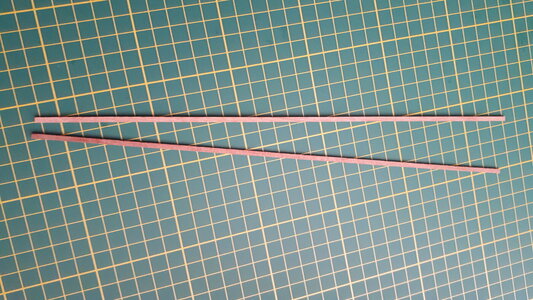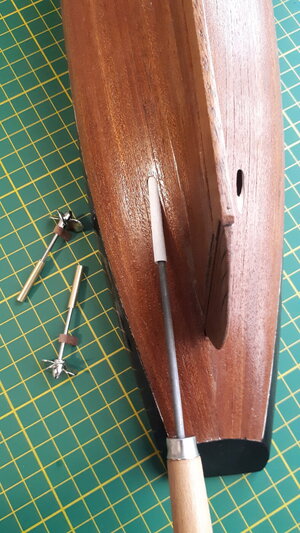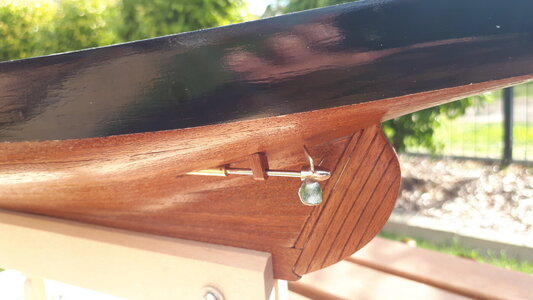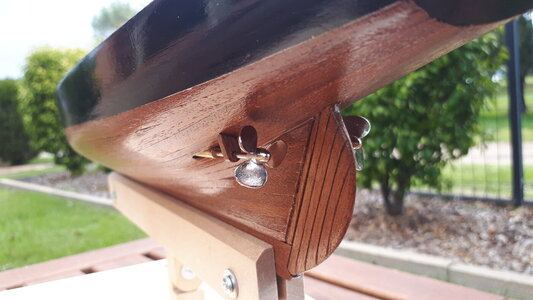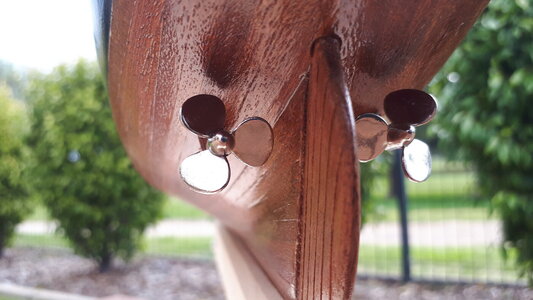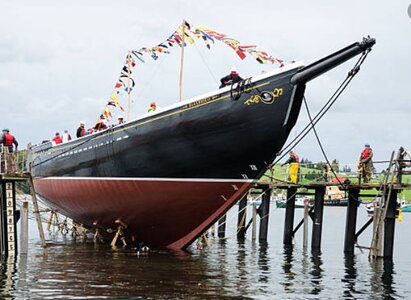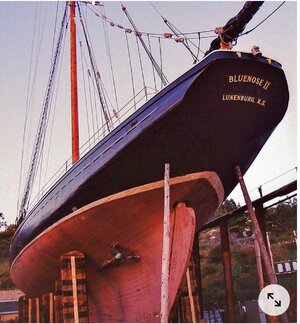After trying all sorts of combinations on scrap wood, I eventually settled on a sequence of natural wood filler, satin varnish and flat black paint to complete the colouring of the hull above the flotation line. I started by scuffing the bulwarks with sandpaper to provide a better purchase for the filler, smeared the filler on relatively thick and then, once dry, sanded it with 240-grit to within an inch of its life.
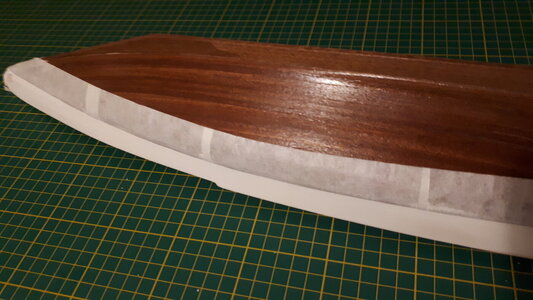
Once I was satisfied that the filler had elevated the surface of the bulwarks to the same level as the second planking layer, I added a coat of clear satin varnish in the hope that it would secure the filler and add just a very small degree of gloss to the paintwork. Finally, I applied two coats of flat black paint to the varnished surface with a broad, flat brush and was oh so careful not to let it bleed onto the deck or planking.
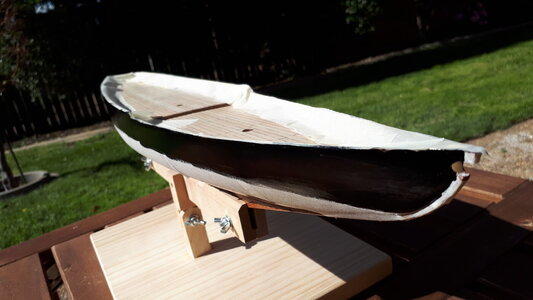
I was reasonably satisfied with the outcome. Some of the black paint did seep through to the edges of the planking and required a single-edged razor blade to remove. And after examining AL's photo instructions more closely, I realised that the front section of keel - at the stem, above the flotation line - is also painted black and did not require the painter's tape I had protected it with earlier.
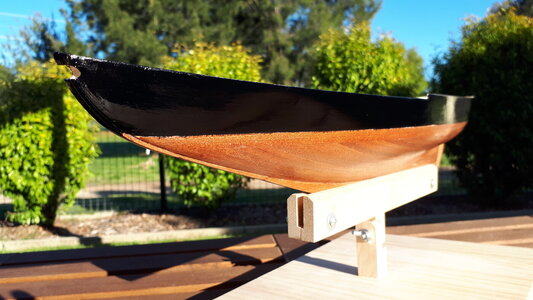

Once I was satisfied that the filler had elevated the surface of the bulwarks to the same level as the second planking layer, I added a coat of clear satin varnish in the hope that it would secure the filler and add just a very small degree of gloss to the paintwork. Finally, I applied two coats of flat black paint to the varnished surface with a broad, flat brush and was oh so careful not to let it bleed onto the deck or planking.

I was reasonably satisfied with the outcome. Some of the black paint did seep through to the edges of the planking and required a single-edged razor blade to remove. And after examining AL's photo instructions more closely, I realised that the front section of keel - at the stem, above the flotation line - is also painted black and did not require the painter's tape I had protected it with earlier.




